-
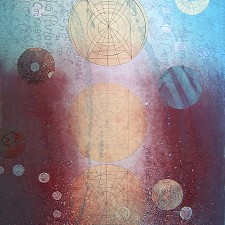
Homage to Giordano Bruno II
-
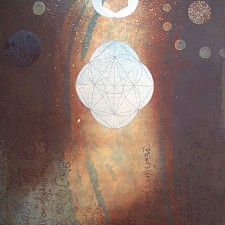
Homage to Giordano Bruno III
-
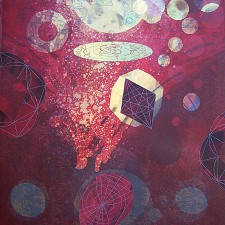
Homage to Giordano Bruno IV
-
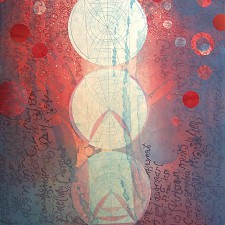
Homage to Giordano Bruno V
-
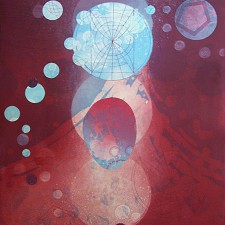
Homage to Giordano Bruno VI
-
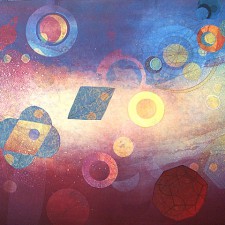
Homage to Giordano Bruno VII
-
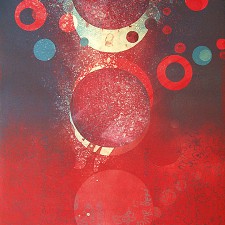
Homage to Giordano Bruno VIII
-
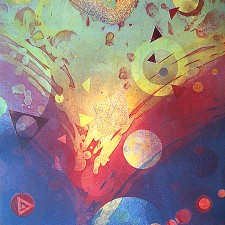
Homage to Giordano Bruno IX
-
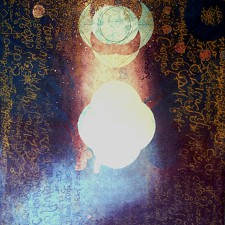
Homage to Giordano Bruno X
-
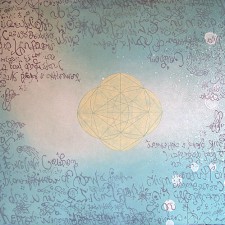
Homage to Giordano Bruno XI
-
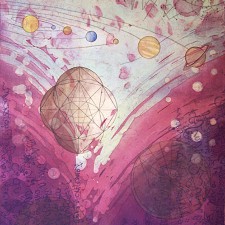
Homage to Giordano Bruno XII
-
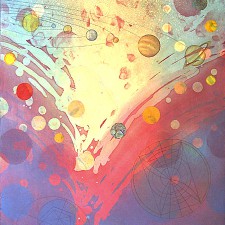
Homage to Giordano Bruno XIII
-
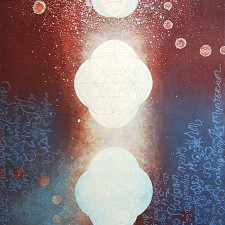
Homage to Giordano Bruno XIV
-
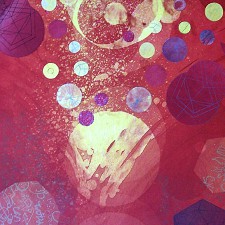
Homage to Giordano Bruno XV
Artist statement, Homage to Giordano Bruno
Since the early twentieth century artists have investigated themes or forms associated with the cosmos, and I am no exception. In particular, I am attracted to the formal possibilities inherent in the geometry and the mathematical order associated with the cosmos since the time of Pythagoras. The geometric elements in this series were inspired by the sketches and writings of Giordano Bruno included in his publication, Articulus adversus mathematicos.
Giordano Bruno was born in Nola near Naples in 1548. His exceptional intellectual abilities were soon noticed and he entered into the Dominican Monastery in Naples where he studied, among other things, Aristotelian philosophy. When he began to postulate his own ideas of the universe he came to the attention of the Inquisition in Naples and then in Rome. To avoid persecution he left Italy in 1576 to live in France, England, and Germany, where he studied, taught, and published many books.
During his years abroad Bruno studied the writings of Copernicus, Galileo, Kepler, and others. He not only adhered to the Copernican view of a central sun, but he believed that the stars were also suns lying at a tremendous distance from Earth. He wrote, lectured, and passionately argued his ideas of the universe being infinite and vast and the possibility of an infinite number of worlds inhabited by intelligent beings. He spoke of God as being immeasurable and being present in all things. He was outspoken about his ideas of free thought and speech.
After returning to Italy in 1591, he was soon arrested by the Inquisition and sent to Rome for trial. For eight years he was kept imprisoned, periodically interrogated and tortured. After receiving his final sentence of death he said, “Perhaps you my judges pronounce this sentence against me with greater fear than I receive it.” Refusing to recant a single word his tongue was pulled out by his executioners, and he was burned at the stake in Compo dei Fiori in the middle of Rome in 1600.
This series of etchings gives homage to the courageous spirit and ideas of Giordano Bruno, his quest for broader views and his relentless fight against corruption and for truth.